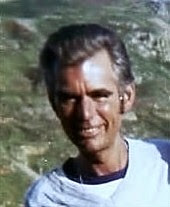
God’s Eye in the Sky
The Pantheon Church in Rome was originally built as a Pagan Temple by Marcus Agrippa, the Son of the Emperor Augustus. It is one of the most fascinating churches in Christendom.
Destroyed by fire in AD 80 it was rebuilt by the Emperor Hadrian. It isn’t an especially beautiful building. Its round and built of bricks made from volcanic ash. It has however a unique feature.
Imagine my surprise whilst standing in the centre of the circular edifice when I was conscious of rain falling on me. I looked up. Above me was a great circular hole or oculus in the dome through which I could see the sky.
It is related that Hadrian wanted the oculus at the top to reveal the sky so that the temple could mirror the human experience of being exposed both to the infinite universe and also sheltered within its embrace.
On thinking about that opening, I discerned a key to the significance of religion. That is to have a courageous, open hearted appreciation of the mystery that surrounds, permeates and lies at the centre of our lives…God or the Spirit for want of a better name.
Nathaniel Hawthorne writing in the mid nineteenth century referred to the oculus as the path-way of heaven’s radiance. Religion grants to mystery an eternal truth that seeks for ways to contemplate it and give it pride of place in our lives. Science will never replace religion.
The “Oculus” of the Pantheon, focusing the divine eye, symbolized by the sky, reflects the space in our hearts and minds that will never be filled by knowledge –scientific or otherwise. I call that space a “God Space.”
Mystery lies at the heart of religion. Too many people to-day want to prove the existence of God or that prayer works. Traditional religious societies don’t need such proof. They pray no matter what because they trust their own spiritual insights. Genuine faith is rooted in a basic “not knowing” about ultimate things and religion assists us to be in relation to that mystery: to God and Eternity. A few years ago I came across a remarkable paragraph in a book by the Tibetan Lama Anagarica Govinda.
“Just as a white summer cloud, in harmony with heaven and earth, freely floats in the blue sky from horizon to horizon, following the breath of the atmosphere – in the same way the pilgrim abandons himself to the breath of the greater life that wells up from the depths of his being and leads him beyond the furthest horizons to an aim which is already present within him though hidden from his sight.” ( The Way of the White Clouds- page xiii in the Forward.)
The Pantheon Church in Rome was originally built as a Pagan Temple by Marcus Agrippa, the Son of the Emperor Augustus. It is one of the most fascinating churches in Christendom.
Destroyed by fire in AD 80 it was rebuilt by the Emperor Hadrian. It isn’t an especially beautiful building. Its round and built of bricks made from volcanic ash. It has however a unique feature.
Imagine my surprise whilst standing in the centre of the circular edifice when I was conscious of rain falling on me. I looked up. Above me was a great circular hole or oculus in the dome through which I could see the sky.
It is related that Hadrian wanted the oculus at the top to reveal the sky so that the temple could mirror the human experience of being exposed both to the infinite universe and also sheltered within its embrace.
On thinking about that opening, I discerned a key to the significance of religion. That is to have a courageous, open hearted appreciation of the mystery that surrounds, permeates and lies at the centre of our lives…God or the Spirit for want of a better name.
Nathaniel Hawthorne writing in the mid nineteenth century referred to the oculus as the path-way of heaven’s radiance. Religion grants to mystery an eternal truth that seeks for ways to contemplate it and give it pride of place in our lives. Science will never replace religion.
The “Oculus” of the Pantheon, focusing the divine eye, symbolized by the sky, reflects the space in our hearts and minds that will never be filled by knowledge –scientific or otherwise. I call that space a “God Space.”
Mystery lies at the heart of religion. Too many people to-day want to prove the existence of God or that prayer works. Traditional religious societies don’t need such proof. They pray no matter what because they trust their own spiritual insights. Genuine faith is rooted in a basic “not knowing” about ultimate things and religion assists us to be in relation to that mystery: to God and Eternity. A few years ago I came across a remarkable paragraph in a book by the Tibetan Lama Anagarica Govinda.
“Just as a white summer cloud, in harmony with heaven and earth, freely floats in the blue sky from horizon to horizon, following the breath of the atmosphere – in the same way the pilgrim abandons himself to the breath of the greater life that wells up from the depths of his being and leads him beyond the furthest horizons to an aim which is already present within him though hidden from his sight.” ( The Way of the White Clouds- page xiii in the Forward.)
















